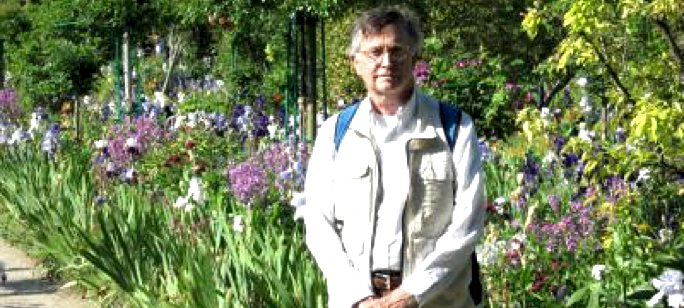
A passion for the natural world began decades ago for renowned Washington climate scientist Dr. Richard Gammon. Growing up in a Washington DC suburb he was a boy scout and enjoyed camping and hiking. “I have always loved the natural world,” he says. Nature and our relationship to it would become his muse over a long and diverse scientific career.
Before becoming a Professor of Chemistry and Oceanography and Adjunct Professor of Atmospheric Sciences at the University of Washington, Dr. Gammon was an astrochemist—he studied chemistry in space! In the 1980’s he traveled to Brazil to look for the molecules of the origin of life in interstellar clouds. That was a formative experience.
“I was disheartened by the environmental degradation I saw in Brazil, and that gave me an urge to work on things that really mattered,” said Dr. Gammon.
He began studying the ozone hole, which then led him to develop ways to measure climate changing gases, like CO2, in our oceans and in the atmosphere. “Half of the CO2 we emit doesn’t stay in the air,” he says. It makes its way into the oceans and forests. As a result, our oceans are becoming more acidic, and deforestation—especially in the tropics— is making it harder for the earth to reabsorb the CO2 from our fossil fuel burning.
“The impacts of a changing global climate are also being experienced here in the Pacific NW: the falling winter snowpack and increasing glacier melt in the Cascades; the increasing number and severity of forest fires; the death of half the sockeye salmon run in the Columbia River; the failure of oyster spawning in our coastal waters. Even the watering restrictions we all experienced this summer are tied to what’s happening in the air,” he said.
As a researcher and academic, Dr. Gammon has contributed critical climate research and has taught thousands of undergraduates the nuts and bolts of climate science. But, today his passion is bringing an understanding of climate issues to the public—regular people who aren’t scientists.
He’s found a keen audience in Washington State churches. “Now, I’m speaking more from my heart than just from my head. As a citizen, husband, father and grandfather I see climate change not just as a scientific issue, but even more as a moral/ethical issue, which is why speaking to church groups makes sense,” he says. “We should all be very worried about our grandchildren and the world we are passing on them.”
Despite his occasional nickname—“Dr. Doom”—Dr. Gammon’s climate ‘sermons’ encourage audience to maintain hope. “Don’t turn away from what’s happening to our planet,” he says.
“Honestly facing the damage we are causing to our world, we need to go through all the phases of grief in this loss—denial, anger, deal-making, and finally acceptance—and then come out on the other side energized as a climate warrior for change.”
And how do we become climate warriors? Dr. Gammon says we can start by measuring and then reducing our own carbon footprints. And then by becoming politically active and demanding that Washington State, and the USA, step up and make changes to protect its people and places.
